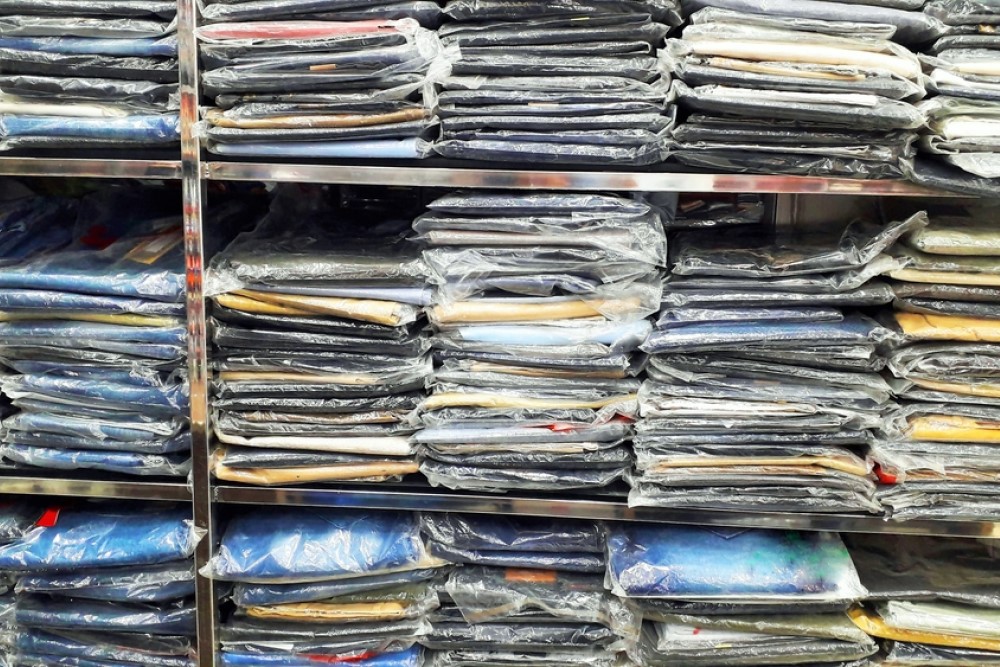Fast Fashion Isn’t the Fashion Industry’s Only Problem

Most young Americans have never lived in a world where the latest fashion trends were not available instantly at dizzyingly low prices. Fast fashion retailers like Shein and ASOS offer seemingly endless online catalogs of low-quality clothes, typically about as durable as tissue paper, and in the last few years they’ve broadened their audiences through social media sites like TikTok and Instagram. Influencers purchase a few hundred-dollars worth of clothing, reflecting that week’s micro-trends, and spread these finds out on the floor to be filmed. Most items are only worn a few times before they move on to their next haul. To get a sense of the scope of this problem, we might look at pioneering online retailer ASOS, which aims to add roughly 5,000 items to its virtual catalog every week. As Terry Nyguen, a reporter on consumer trends for Vox, explains, “Garment production has quietly accelerated to breakneck speeds over the past three decades, easing young and old consumers into thinking of their clothes as disposable.”
As a culture, we’ve been trying to wrap our heads around fast fashion for nearly a decade now; for example, Sakshi Sharma and Victoria Jennings have probed the ethical dilemmas posed by fast fashion before here on the Post. Sharma explains how the industry allows wage stagnation and workplace abuse to flourish, and Jennings examines the negative impact fast fashion has on the environment. It is worth noting how extremely difficult it is to quantify this negative impact. The oft-repeated statistic that the garment industry pollutes more than any other, with the exception of oil, seems to come from a study on a single Chinese province, as Alden Wicker explains in his expose on the tangled web of shoddy evidence and unverifiable data that impede genuine research. Misinformation, he argues, poses obstacles for consumers and eco-activists alike.
But regardless of what the exact impact is, the fashion industry is ramping up, not slowing down. A 2019 report published by the Global Fashion Report on the fashion industry predicts a global increase in textile production of 81% by 2030. It’s near impossible to make a case for fast fashion, but at the same time, it’s misguided to focus all of our ire on that specific sector of the industry when high fashion is just as guilty of unsustainability. Is fashion itself, as we currently understand it, inherently unsustainable?
Unfortunately, a designer label is hardly a guarantee of eco-friendliness. Urban Outfitters and Anthropologie, while not exactly qualifying as “high fashion,” are certainly on a different tier than Shein. However, these two brands, which are owned by the same company, still use unsustainable synthetic fabrics like polyester, and neither is especially transparent about where and how their garments are made or what steps they plan to take to reduce carbon emissions. Companies that definitely would be considered high fashion, like Versace, have made gestures towards sustainability, but as one sustainability-rating site noted, there is no evidence that Versace is on track to meet its goals.
Paradoxically, fashion is both art and commodity. We think of our clothing as expressive of our true essence and therefore unique, but the things we buy are selecters for us by a cadre of market researchers and boardroom executives, and are ultimately iterations of ephemeral trends that flatten rather than enrich individual expression. Fashion, as essayist Kennedy Fraser noted in 1978, is at its core “materialistic, and holds that appearances are of greater significance than substance. Among the shared limitations are fickleness, a preoccupation with descrying the will of the majority in order to manipulate it or pander to it, and a concern with the accumulation or protection of power and profit. Although all fashion looks mobile and rebellious at times, its roots are surprisingly constant: to think or act for reasons of fashion in any given field is to support that field’s established centers of power.” Fraser rightly points out that fashion in general, whether high or low, requires a base of consumers, so its continuation can only ever perpetuate the aims of capitalism. Even the most daring trend can be watered down and shuffled onto a Target sales rack, fully incorporated into the mainstream culture it once challenged the boundaries of.
At the same time, how impossible it is to dismiss the idea of fashion, to stop our ears against the alluring language of pattern and color, of form and movement. Like any kind of image-making, fashion provides us with metaphors and symbols through which we understand ourselves and our position in the world. Situated at the intersection between private and public, between self and other, these polyvalent symbols allow us to simultaneously articulate, as well as create, our sense of self. The fashion industry capitalizes on these ingrained desires, which is partly why addressing the negative environmental impact of the garment industry is so difficult. Consumers should and must shun fast fashion brands, but that only tackles one small part of the problem. We need to completely rethink fashion, finding a way to embrace the good and discard the bad, if we want to lay the foundation for a more sustainable world.




